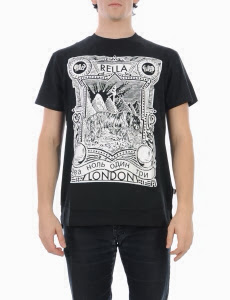The Ethical Fashion Forum's Brand Preview is the place to be if you want the latest trends and ideas for the year ahead. Stuffed to the gills with designers and innovators from Bangladesh to Bond Street, it's an eclectic and inspiring show, made all the more inviting for a couple of reasons. First, it's free to attend. Second, you can enjoy the whole shebang from the comfort of your sofa, with a cuppa, in your onesie.
The Brand Preview takes place entirely online, using the Citrix GoToMeeting platform. This means you can access it when and where you choose, dropping in and out as the mood takes you. It's robust enough that you can even use a tablet (which worked perfectly for me as a scribe on the go). And of course, the carbon impact is minimal. No shlepping across country to an anonymous conerence hall.
This is my second Brand Preview, and I'm always struck by the way in which you very quickly get a handle on the upcoming trends and schools of thought that tick at the heart of the business. If you want a primer into the ethos and philosophy of ethical fashion in an inclusive and non-elitist atmosphere, this is the place to go.
Let me give you a couple of examples from two of the seminars I attended (in my jammy bots, with the cat nudging at me for fuss). The
Atelier show featured high fashion pieces finished to an extremely high standard. As I noted in my trends article last month, high-end fashion is increasingly taking note of the way ethical fashion rolls, and atelier is where the real innovators are to be found. As Jennifer of Eden Deodati, heading up the hour put it, fashion filters from the high end down. It will always slope from the catwalk to the high street. If it's trendy to be ethical, then the market will respond.
There was significant use of innovative materials: biodegradables such as PLA (made from corn starch) or Japanese paper. Bamboo seems to be everywhere. José Hendo showed her clever use of organic bark. Clothes were accessorised with sustainable materials like rubber and brass. Prints and dyes are back too, with some great new techniques, including rust. Yep, good old oxidised iron can be used to detail clothes.
There was, of course, a strong emphasis on
social issues, and many of the exhibitors made a point of noting their work in empowering neglected and isolated communities and disenfranchised minorities. For example, Eden Diodati has started working with female survivors of the Rwandan genocide. Alongside that, there's a belief in merging traditional skills with modern techniques, and on training, allowing artisans to develop, expand and showcase the skills they have to offer. The eclectic nature of remix culture is especially playful in the atelier sector: why not as Ala Mairi showed, merge skills from Scottish and Pakistani artisans, mashing rich sub-continent colours with the solid structure of warm Northern European clothing?
Upcycling also seems to be a big deal at the bespoke end of the market. From Raggedy's textural, structured one-of-a-kind pieces to Recycle Style's use of materials like newspaper in theatrical, avant-garde ways, there's a real sense of paradigm shift -- changing the perception of what constitutes rubbish and what you can do with it.
One last point, which I think is especially pertinent for the expensive end of the market. Several exhibitors noted they were passionate about creating timeless pieces that can be worn again and again. This is a highly sustainable ethos, of course, but doubly important for a sector where high quality comes with a fat price tag. Thrift is the backbone of ethical fashion, and a shift away from the toxic habit of yearly trends which means you have to bin a wardrobe of perfectly good clothing just because Vogue tells you to can only be applauded.
I was especially keen to check out the ethical menswear hour, speaking as an ethical man that wears clothes. Here, too, there's plenty of forward thinking. There are some clear
trends at play. Tailoring is becoming more important, as the 21st century gent rediscovers the joy of dressing up. A focus on colour and detailing means that there's no need to be bland, either: witness the eye-popping cuff linings on Arthur & Henry's beautifully made shirts. Tweed, that most sustainable of local fabrics, is also making a comeback. We're seeing the growth in popularity of sturdy clothes for dapper blokes.
Basics with an edge are going to be big in 2014, with companies like White T-Shirt Co. offering beautifully tailored tops and t-shirts in new fabrics that provide a superior fit and feel. With prints and graphics created using environmentally friendly dyes, be prepared to see ethical companies make big inroads into the high-end casual market.
Innovation in production techniques was high on the agenda.
Cocccon, for example, uses spinning looms powered with solar cells. Keeping sustainability at the heart of the process is core to many companies showing at Brand Preview.
Bangladesh was, of course, on everyone's mind, and Rana Plaza has become a defining moment for the ethical fashion movement. It was great to see
Rella, a company producing high-end tops and basics, based in Dhaka, Bangladesh. They have built a studio factory, insist on exemplary working conditions for their employees and are doing their utmost to show the industrial heartland of fashion how to do it right.
I'm skimming over the surface of a very dep pool of information and inspiration here. The good news is that you don't have to miss out on any of it. Hit up the Brand Preview page of the Ethical Fashion Forum for links to all the exhibitors, and audio downloads of the seminars. I can't urge you strongly enough: if you have any interest in ethical fashion, this is where you need to be.
Even if you are in your comfiest slippers.
THE SOURCE BRAND PREVIEW 2014






